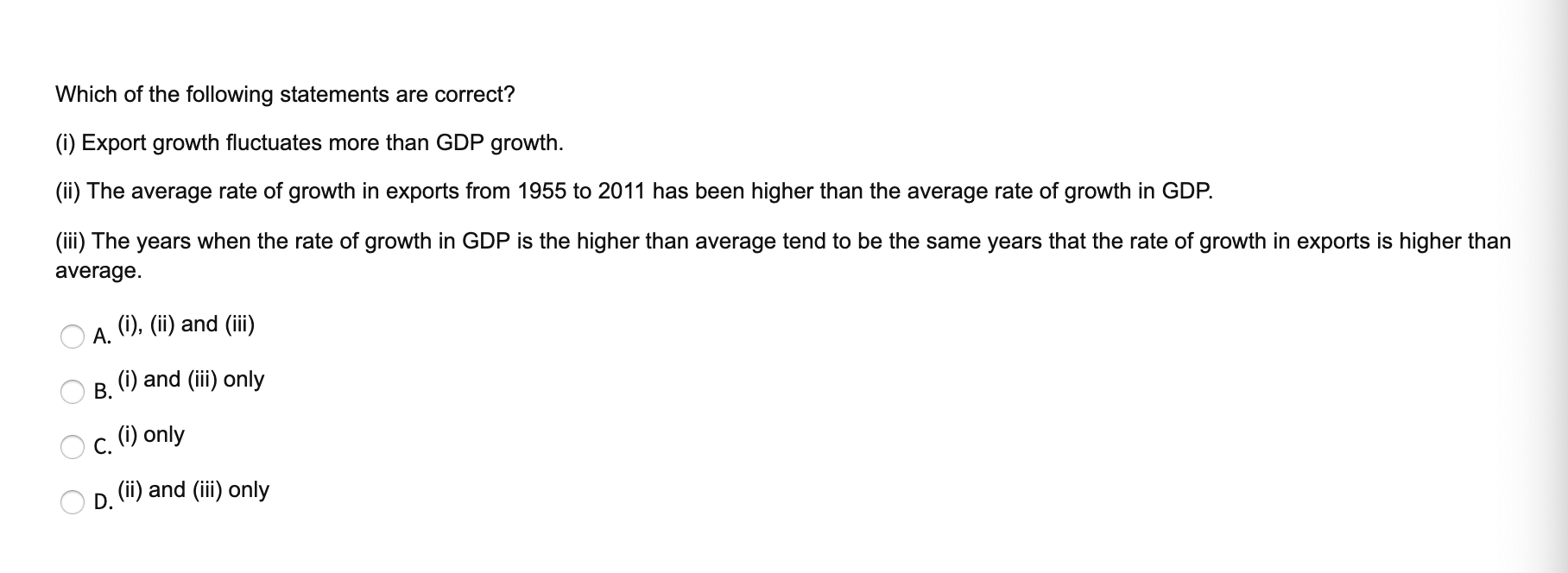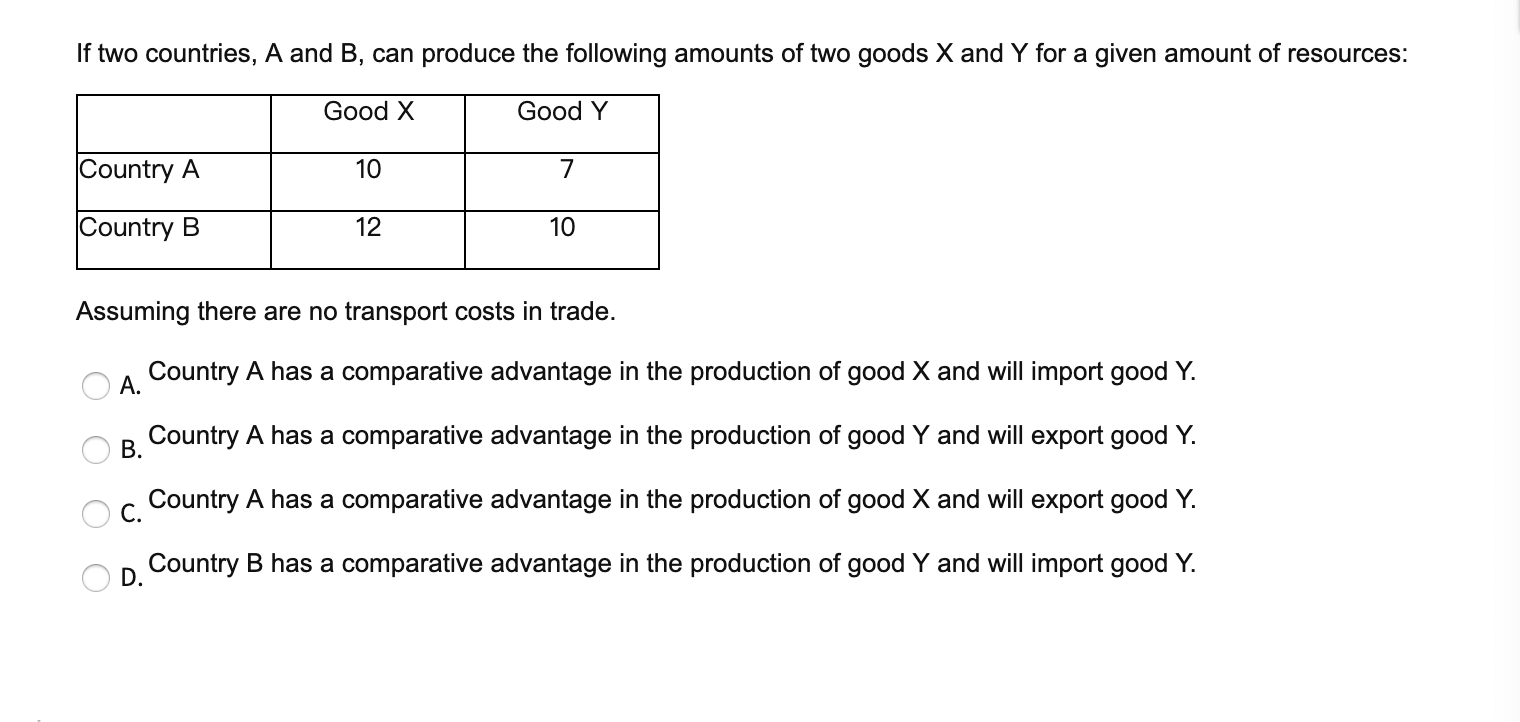Question
The NAFTA arrangement between the USA, Canada and Mexico should have had which of the following effects compared with the pre-agreement situation? A. An increase
The NAFTA arrangement between the USA, Canada and Mexico should have had which of the following effects compared with the pre-agreement situation?
A.
An increase in exports and imports between each of the three countries
B.
An increase in the price of Canadian and Mexican goods sold in the USA
C.
An increase in the price of US goods sold in Canada and Mexico
D.
All of the above
Under the WTO's 'most favoured nation' clause
A.
a country that receives a trade concession from another is then entitled to receive the same concession from all other signatories.
B.
countries can make special deals with other countries provided that they are agreed with the WTO.
C.
exports from favoured nations will be subject to lower tariffs than from other nations.
D.
any trade concession that a country makes to one member must be granted to all signatories.
The international agreement signed by 23 countries in 1947 to promote the liberalisation of foreign trade was known as
A.
GATT.
B.
IMF.
C.
WTO.
D.
UNESCO.
Which of the following is NOT a valid argument for protection?
A.
To allow older industries with a potential comparative advantage a chance to make significant investments
B.
To keep declining industries going in the long run in order to safeguard jobs
C.
To allow infant industries to survive foreign competition
D.
To prevent dumping by other countries from giving them an unfair advantage over domestic suppliers
When countries specialise in producing those goods in which they have a comparative advantage, they
A.
maximise their combined output, but they do not necessarily allocate their resources more efficiently.
B.
do not necessarily maximise their combined output, and they also do not necessarily allocate their resources more efficiently.
C.
maximise their combined output and allocate their resources more efficiently.
D.
allocate their resources more efficiently, but they do not necessarily maximise their combined output.
A tariff is
A.
the difference between the price a product sells for in the country it is produced in and the price it is sold for in another country.
B.
a tax on imports.
C.
a limit on the quantity of a good that can be imported into a country.
D.
a government payment made to domestic firms to encourage exports.





Step by Step Solution
There are 3 Steps involved in it
Step: 1

Get Instant Access to Expert-Tailored Solutions
See step-by-step solutions with expert insights and AI powered tools for academic success
Step: 2

Step: 3

Ace Your Homework with AI
Get the answers you need in no time with our AI-driven, step-by-step assistance
Get Started


